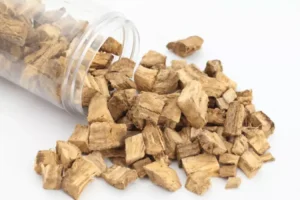
Alcohol abuse can increase your risk for some cancers as well as severe, and potentially permanent, brain damage. It can lead to Wernicke-Korsakoff syndrome (WKS), which is marked by amnesia, extreme confusion and eyesight issues. While having a drink from time to time is unlikely to cause health problems, moderate or heavy drinking can impact the brain. Dopamine antagonists decrease lever-pressing for ethanol in a sucrose-fading procedure [130, 131]; this is done in animals that were experienced with ethanol and during intervals of alcohol deprivation. In a conditioned place preference study, alcohol is reported to be dopamine-dependent in alcohol-naive animals but not in withdrawn, experienced, animals [132].
The Neuroscience of Addiction – Application to Clinical Practice
As part of a collaborative effort examining the effects of long-term alcohol self-administration in rhesus macaques, we examined DS dopamine signaling using fast-scan cyclic voltammetry. We found that chronic alcohol self-administration resulted in several dopamine system adaptations. Following long-term alcohol consumption, male macaques, regardless of abstinence status, had reduced dopamine release in putamen, while only male macaques in abstinence had reduced dopamine release in caudate.
- Despite its positive correlation, some studies have produced contradictory results.
- Candidate genes suggested in the development of alcohol addiction are involved in the dopaminergic, serotoninergic, GABA and glutamate pathways.
- Pharmacologic targeting of GABAB receptors with baclofen, a GABAB agonist, can suppress alcohol drinking and withdrawal in rodents and human alcoholics.27 There are many proposed mechanisms for baclofen’s therapeutic actions in the context of AUD, but most of these hypotheses require further investigation.
- For practical, evidence-based tips on supporting your patients with AUD, see the Core articles on treatment, referral, and recovery.
Activities That Release Dopamine
Some experiments found no difference in DA release in the NAc after intraperitoneal injection of ethanol between P and NP rats. For example, Yoshimoto and colleagues[11] and Gongwer and colleagues[23] found that although HAD and LAD rats differed in their basal level of extracellular DA, they did not differ in CNS DA release after intraperitoneal injection of ethanol. Similarly, Kiianmaa and colleagues[28] found no differential increase alcohol and dopamine of extracellular DA concentration in the NAc between AA and ANA rats after microdialysis of ethanol. These varying results may be due to the use of different animal models or different research protocols. Researchers at McGill University in Canada performed positron emission tomography (PET) brain scans on 26 social drinkers and noted a “distinctive brain response” in the higher-risk subjects after they consumed three alcoholic drinks.
Voltage-Gated Calcium Channels
This can involve having unprotected sex, having sex with someone who is a stranger and might be dangerous, or not taking care of the responsibilities you have in life because you are busy pursuing sex. According to the American Society of Addiction Medicine (ASAM), addiction is complex and influenced by many factors. Behavioral addictions are real, and some, like gambling, are more likely to cause addiction than others. The key is to be mindful of your behavior and how it affects your life and seek help if you think your behaviors might be problematic. No matter how enjoyable, engaging in regular, dopamine-boosing activities is unlikely to rewire your brain so you no longer enjoy the simpler things in life. While some have hypothesized that dopamine exposure can lead to tolerance—meaning you need more and more of it to feel the same effects—there isn’t actually any research to substantiate this.

Cannabis There are many cannabinoids, some of which have psychoactive effects and remain to be studied. The primary psychoactive ingredient in marijuana is ∆9-tetrahydrocannabinol (THC). Newer rodent models of edible or vaporized THC self-administration hold promise [142, 143].

DNA methylation in the medial prefrontal cortex regulates alcohol-induced behavior and plasticity
Surprisingly however, Gsk3β in the NAc is inhibited by alcohol in rats [40], emphasizing the region-specificity of alcohol’s action. Like Fyn, the kinase mTORC2 is specifically activated by alcohol in the DMS of mice [59]. Alcohol-dependent activation of mTORC2 in the DMS promotes F-actin assembly, the formation for mature spines and alcohol intake [59]. Glutamate is the major excitatory neurotransmitter in the brain https://ecosoberhouse.com/ and it exerts its effects through several receptor subtypes, including one called the N-methyl-D-aspartate (NMDA) receptor. Glutamate systems have been known for a long time to be involved in the acute reinforcing actions of alcohol and the effect of alcohol on an organism can be mimicked with the help of NMDA receptor antagonists.[3] Unlike the case with GABA, alcohol inhibits glutamate activity in the brain.
- While this may be difficult to do in NHPs, where experimental manipulations are limited, parallel experiments in rodent models may be able to provide useful information.
- In addition, this study only included males due to sex differences in the dopamine system [118, 119].
- Some states have higher penalties for people who drive with high BAC (0.15 to 0.20 or above) due to the increased risk of fatal accidents.
- Dopamine neurons discharge in bursts when triggered by external stimuli, and this burst-firing enables formation of potentiated glutamate-GABA signaling that is critical for learned searching.
- Recent advances in neurotechnologies have opened new avenues of investigation into how alcohol-induced alterations in neural circuit activity influence ongoing behaviors and decision-making (Figure 2) [4,68].
Detailed methods for these assays are available in Supplementary Materials and Methods. For the determination of dopamine transient uptake kinetics, the modeling module in DEMON was used as previously described [30]. Briefly, the dopamine affinity for the transporter (Km; set to 0.16 µM) was held constant and the dopamine peak height was determined empirically for each file and used for determination of Vmax (dopamine uptake rate), which was altered to best fit the empirically obtained dopamine transients. To examine D2/3 dopamine autoreceptor function, the D2/3 dopamine receptor agonist, quinpirole (30 nM), was bath applied for 30 min and was followed by application of the D2-like dopamine receptor antagonist sulpiride (2 µM) for 15 min.

We are also thankful to the members of the Sara Jones laboratory at Wake Forest University and the Laboratory for Integrative Neuroscience at NIAAA for their support and helpful discussions. The toll that frequent alcohol use can have on your body can be severe but in some cases, the damage can be reversible. There’s also more of an effect on your brain and its development if you’re younger — one that can have a lasting impact. Alcohol reaches your brain in only five minutes, and starts to affect you within 10 minutes.


No Comments